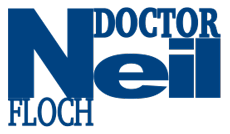THE PROCEDURE
The Laparoscopic Nissen Fundoplication requires highly specialized extensive training. There are very few surgeons in the United States that perform this surgical procedure. Dr. Neil Floch is recognized as a highly skilled laparoscopic surgeon with extensive experience and one of the most prominent surgeons in the country that is performing it. He has written and published several book chapters and papers on this subject that other surgeons are using as reference and guidance in performing the procedure and treating their patients.
The Laparoscopic Nissen Fundoplication is the “gold standard” surgical procedure for the treatment of GERD (gastroesophageal reflux disease). When GERD can no longer be controlled with medication and lifestyle changes the Nissen fundoplication in conjunction with a hiatal hernia repair may be performed. Patients experiencing GERD may have heartburn or one of many GERD related symptoms because acid flows back into the stomach from the esophagus. This acid flow is caused by a weak valve muscle between the stomach and the esophagus. The purpose of this procedure is to strengthen that valve between the stomach and the esophagus. A recent study has determined that 90% who have undergone the procedure are symptom-free after ten years.
The valve between the esophagus and the stomach is reinforced by wrapping the upper portion of the stomach (fundus) around the lowest portion of the esophagus. This is analogous to the way a bun wraps around a hot dog. Our surgeons use small incisions to enter the abdomen. The laparoscope, a thin telescope-like instrument, is connected to a tiny camera and then inserted through the small incision. This enables our surgeons to have a magnified image of the patient’s internal organs projected on high definition television screens in the operating room. Our surgeons then have the opportunity of getting a better view of internal organs in greater detail than the traditional open procedure provides. The abdomen is inflated with gas, causing it to expand, and thereby allowing our surgeons to view the abdominal cavity and perform the procedure.
About 40% of all patients who undergo the Nissen Fundoplication have hiatal hernias. This condition, in and of itself, may or may not cause gastroesophageal reflux, but is a contributing factor to the burning sensation that they experience in their chest, throat and jaw. The hiatal hernia is repaired at the time the Nissen Fundoplication is performed.
BEFORE SURGERY
Please contact your insurance company to determine your benefits. If you require help, one of our patient advocates will assist you. Our surgeons will screen you, and your condition will be thoroughly analyzed to make certain that you are an appropriate candidate for the procedure. A combination of upper endoscopy, barium esophagram, manometry or motility, Bravo Procedure or impedance studies may be performed.
DAY OF SURGERY
PRE-SURGERY – You will report to a pre-operative area where a nurse will review your chart and make certain that all of the necessary paper work is correct and present. Your surgeon will meet with you, discuss the process and answer any questions you may have. The anesthesiologist will conduct a pre-operative interview including questions concerning your medical history. Once everything has been confirmed, and you are ready to proceed, the anesthesiologist will begin the IV. Then it’s off to the operating room where the anesthesia is administered and the operation is performed. The Nissen Fundoplication is performed under general anesthesia, so you will be asleep for the entire procedure which will take one to two hours.
POST SURGERY – After the surgery is completed, you will be taken to a recovery unit where your recovery will be monitored by the nursing staff. You can anticipate spending one night in the hospital. However, this will depend on your condition and our surgeon’s evaluation. No one is sent home unless our surgeon is completely comfortable making the decision to do so. If it is determined that there is a need to keep you for an additional day, or days, you will remain in the hospital. You must provide for someone to drive you home when you are discharged. Generally the Nissen Fundoplication requires a one-night stay.
Pain sometimes has a tendency to appear at the incision site and our surgeon will prescribe medication for it in the event you are faced with this issue.
AT HOME
WHAT CAN I EXPECT?
- Light activity is encouraged while recuperating at home
- Most often postoperative pain is mild. Some patients may have need for prescription pain medication
- Normal activities should begin in 1-2 days
- There may be temporary difficulty in swallowing, but that will resolve within one to two months after surgery
- Your diet will be a pureed or mashed food diet
- We will see you in the first week and advance your diet to include pasta and fish and then to more solid foods
WHEN SHOULD I CALL THE DOCTOR?
It is not often the case, but you may experience symptoms other than general discomfort and mild pain. If the following symptoms persist than we ask that you call us:
- Abdominal swell or pain that continues to increase
- Persistent nausea and vomiting
- Continuous chills or a continuous fever of 1000
- Drainage from the incisions
- Constant cough or shortness of breath
BENEFITS OF THE NISSEN FUNDOPLICATION
- Reduced post-operative pain
- Shorter hospital stay
- Faster return to work. Patients may return to work in 3 days to a week
- 5 tiny scars instead of one large abdominal scar. Improved cosmetic result
RISKS OF THE NISSEN FUNDOPLICATION
While this procedure is relatively safe, there are some risk factors that are not the norm, but the potential for them does exist.
- Reaction to anesthesia
- Infection
- Bleeding
- Difficulty in swallowing
- Injury to the esophagus
- Injury to the spleen
- Recurrence of GERD
- Gas bloat syndrome which is usually temporary in 10- 20%
- Bloating
- Flatus
- Inability to vomit
- Inability to burp





